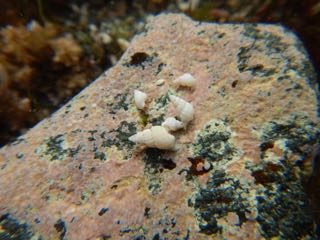
Six small snails, Opalia funiculata (Epitoniidae), found together within about 1 m and placed together, fortunately in a way that encouraged them to be active. Did you see the sixth one?
| 
These are reported to be found at the base of anemones, where they would likely be ectoparasites. I often find them away from anemones.
| 
The best treatments of this species that I have seen are in two monographs on the Eastern Pacific epitoniids by Helen Dushane.
This species is widespread further south, rarely extending north of southern California. See her 1974 and
1979 monographs.
|
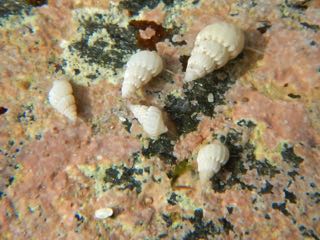
The close proximity of all these might suggest that juveniles crawl away from mom or an
egg capsule, but I could not find specific reproductive observations for this species. Dushane (1979: 93; see link above) summarized epitoniid reproduction as follows:
"Epitoniids are consecutive hermaphrodites, laying their eggs in small clusters, each cluster affixed to the next by a mucus thread. Those species with a habitat in or near sandy
substrates have sand-agglutinated egg capsules, each capsule containing thousands of unhatched veligers. (Coral associated species do not have sand-agglutinated egg capsules.)
As the eggs hatch, the veligers develop a smooth protoconch that is followed by whorls with costae or other characteristic sculpture."
| 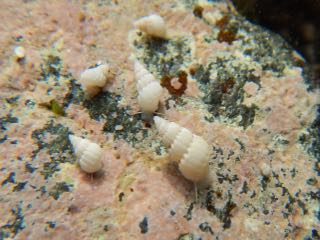
-
| 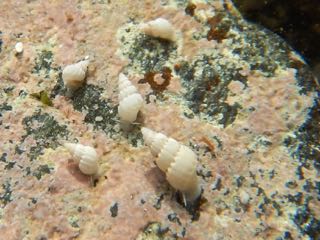
-
|
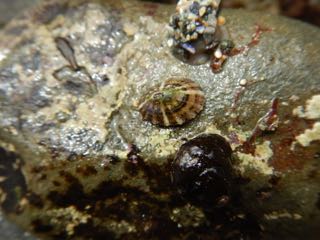
Fissurella volcano, volcano keyhole limpet
| 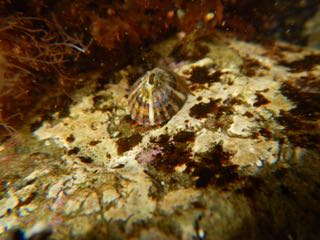
-
| 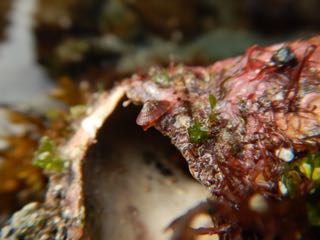
juvenile Fissurella volcano, volcano keyhole limpet
|
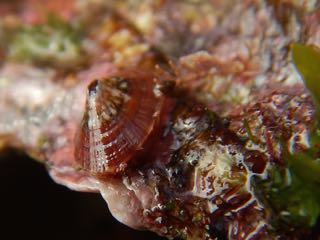
-
| 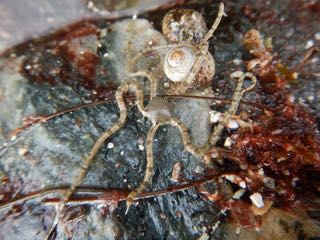
banded brittle star, Ophionereis annulata
| 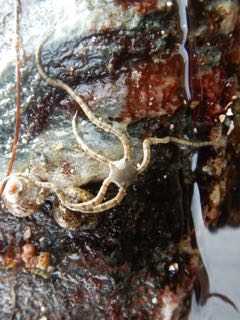
-
|
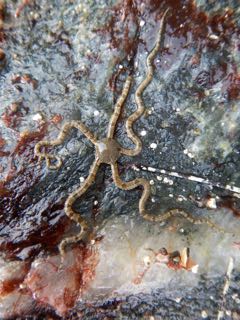
-
| 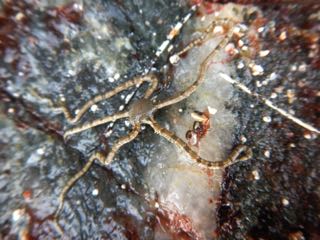
-
| 
-
|
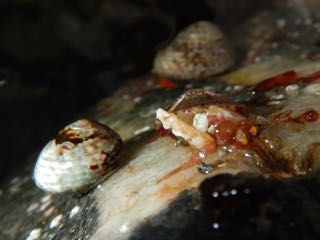
-
| 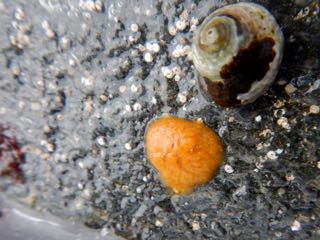
Sponge! I don't know which one. Judging from its small size, this one is fairly recently settled.
| 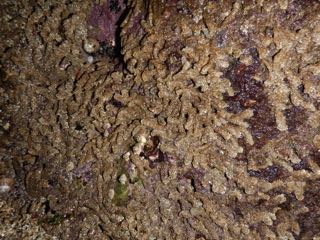
Under a rock ledge were many sabellarid worms, presumed to be Phragmatopoma californica, sand castle worm, but I did not investigate whether these might be a different species in the same polychaete family, Sabellaridae.
|
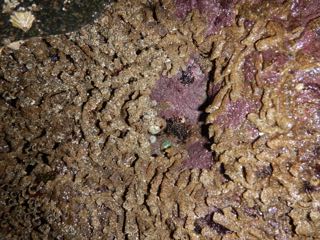
To identify the sabellarid species, Dr. Leslie Harris (Natural History Museum of L.A. Co.) has advised that if the feeding tentacles are purple and the operculum is black it's Phragmatopoma californica. Individual worms for any of the other local sabellarid species have a golden operculum.
| 
Note the three pulmonate limpets, Trimusculus reticulatus, under this ledge, a greenish adult and two whitish juveniles on either side of a Tegula eiseni. The pulmonate limpets are rather sedentary suspension feeders, catching plankton with strings of mucus, which they extend and then pull in like someone fishing might do.
| 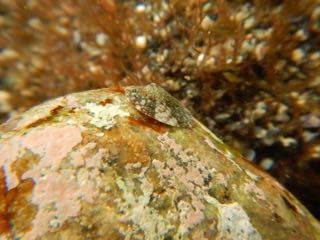
File limpet, Lottia limatula
|
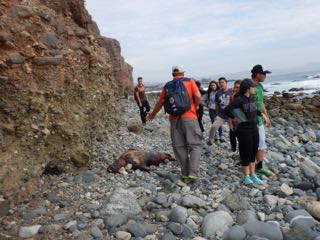
-
| 
From its tail flippers, highly modified for swimming, this is a dead seal, not a sea lion, but I was not sure if this was an elephant seal pup or harbor seal adult. I do know that it smelled quite a bit downwind.
| 
A somewhat uncommon red morph of Hartweg's chiton, Cyanoplax hartwegii
|

-
| 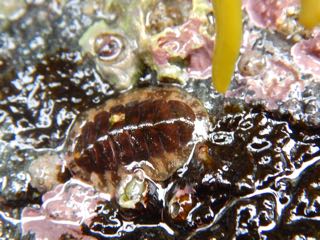
A brown morph of Hartweg's chiton, Cyanoplax hartwegii, is also somewhat uncommon, but this one is still a juvenile.
| 
-
|
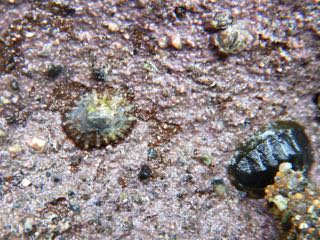
-
| 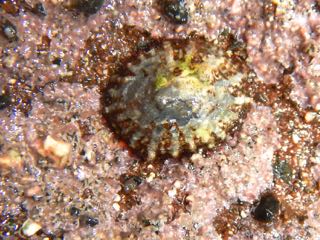
It appears that, this year, Lottia conus is much more common than the similar appearing L. scabra at Dana Point. Only the latter is found, very commonly, in central California and further north. The two are sometimes difficult to distinguish by shell features for variants that overlap in the two species.
| 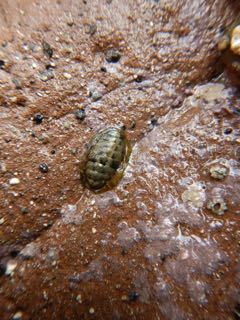
-
|
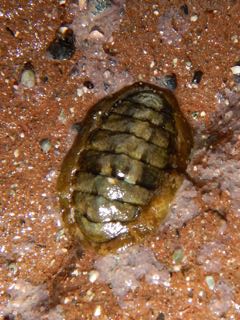
This olive green is a much more typical coloring for Hartweg's chiton. It is common under the similarly colored rockweed, Silvetia compressa, but is also common in tidepools or elsewhere in the mid intertidal zone.
| 
file limpet, Lottia limatula (juvenile)
| 
We saw one healthy-appearing ochre seastar, Pisaster ochraceus. Populations of this species were severely depleted by the recent wasting disease epidemic so seeing any of this species is a bit encouraging.
|
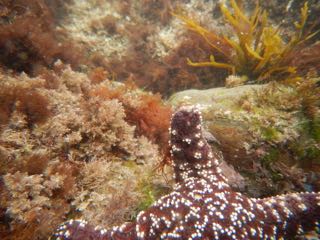
-
| 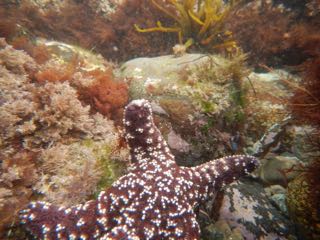
-
| 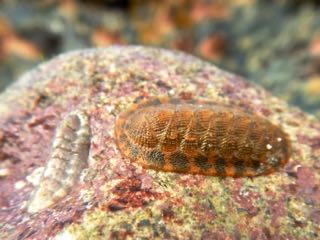
The orangish chiton is Lepidozona pectinulata - the smaller chiton on the left is a juvenile Stenoplax conspicua.
|
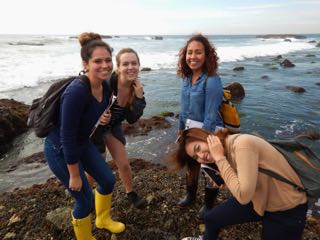
-
| 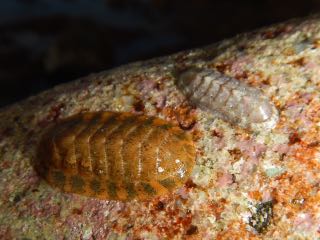
-
| 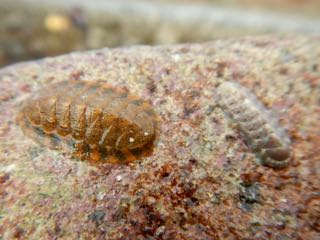
-
|
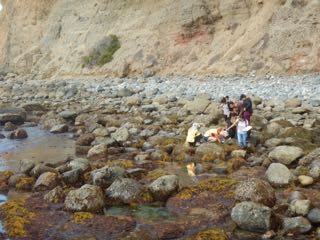
-
| 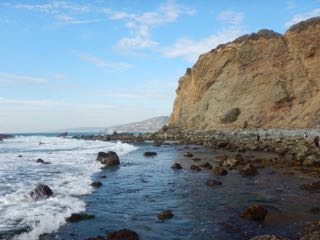
-
| 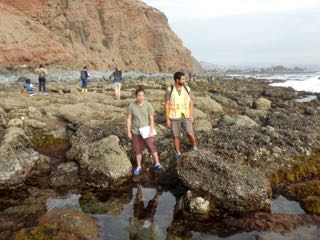
-
|
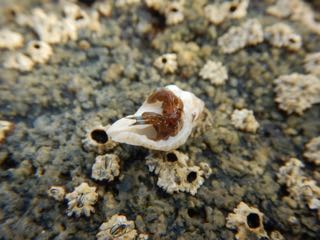
-
| 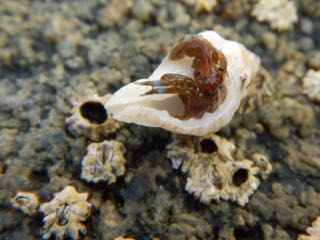
Pagurus samuelis, blueband hermit crab
| 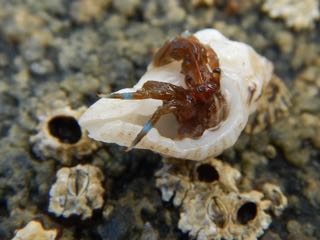
-
|

-
| 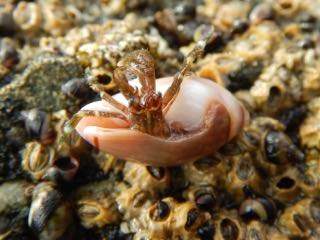
Tentatively, Pagurus hirsutiusculus, hairy hermit crab
| 
-
|
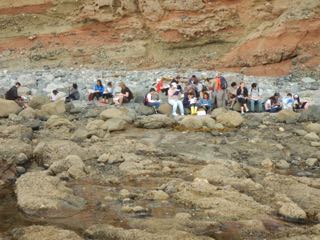
-
| 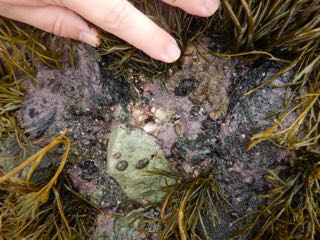
Cyanoplax hartwegii, Hartweg's chiton, and various limpet species are common under rockweeds.
| 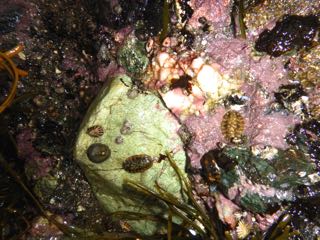
-
|
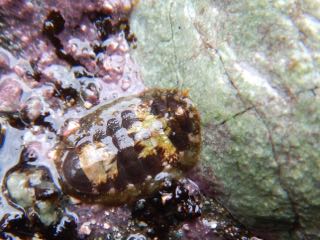
another Hartweg's chiton
| 
Lottia limatula, the file limpet, is the most common limpet under low zone rocks.
| 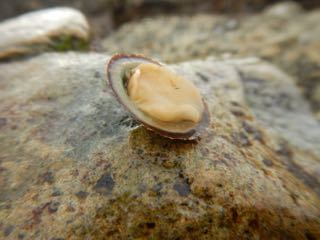
-
|

When the shell is obscured by algae, so that the distinctive file-like radial riblets are obscured,
the file limpet, Lottia limatula, can still be identified because it is one of only two limpets in California with an approximately solid (not spots) pigmented side of foot,
head, and cephalic tentacles. The other limpet with similar pigment, the owl limpet L. gigantea, has a much more anterior apex and is found in a different microhabitat,
defending a territory on midzone rocks with a smooth surface.
| 
Volcano keyhole limpets, Fissurella volcano, were very common on low zone rocks at Dana Pt. They belong to the
gastropod lineage, Vetigastropoda, along with abalones and the common teguline (turban) snails. True limpets do not have a keyhole at the apex of their shell.
| 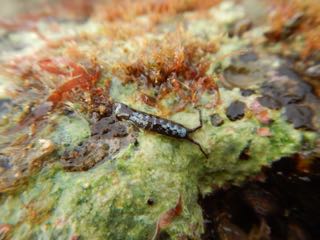
-
|

An isopod, genus Idotea. Further identification of several similar appearing
Idotea spp. occurring in California can be challenging.
This one has impressive patterns on its carapace.
| 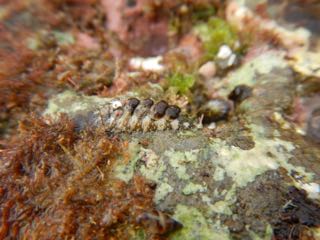
-
| 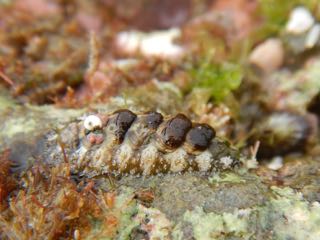
-
|
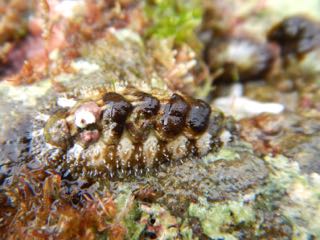
Chitons of the genus, Nuttallina (N. fluxa is most common in southern California), appear much more pristine when found under rocks.
| 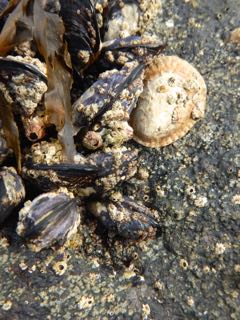
Owl limpet, Lottia gigantea, is a territorial grazer in the mid intertidal zone. It will bull-doze intruders off its territory.
| 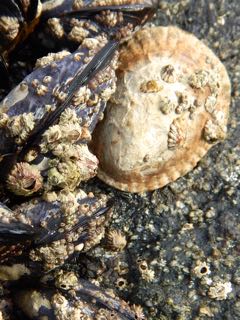
The limpets that have made home depressions on the shell of this owl limpet could be either Lottia conus or L. scabra. There are also acorn barnacles, perhaps Balanus gladula.
|

A tiny predatory snail, Alia carinata, was extremely common under rocks.
| 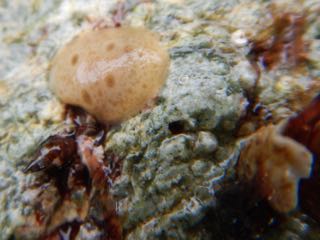
A dorid nudibranch, tentatively Diaulula sandiegensis.
| 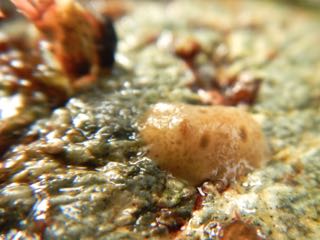
-
|
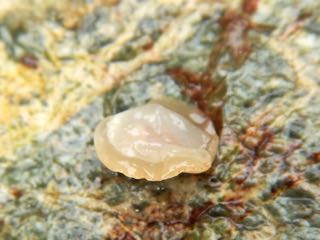
The nudibranch's underside reveals a foot as in other gastropods.
| 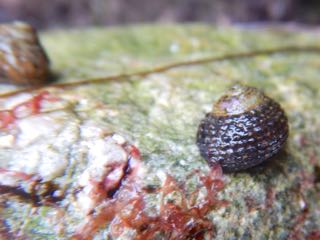
-
| 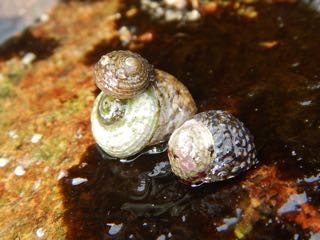
A very common herbivorous snail seen was Tegula eiseni, western banded teguline (or turban) snail.
|
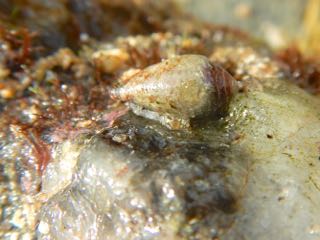
Californiconus californicus, California cone snail
| 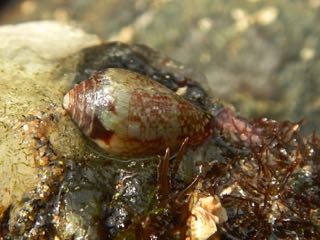
-
| 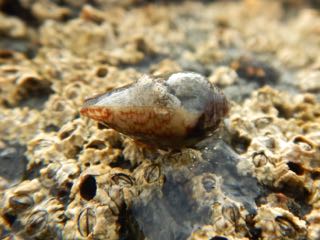
-
|

-
| 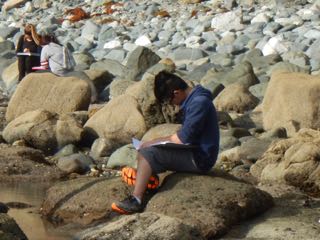
-
| 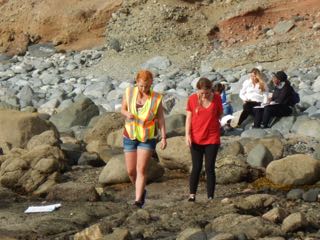
-
|
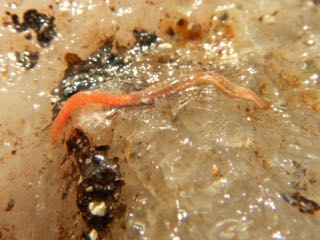
An unidentified nereid or syllid polychaete worm (Annelida).
| 
-
| 
-
|
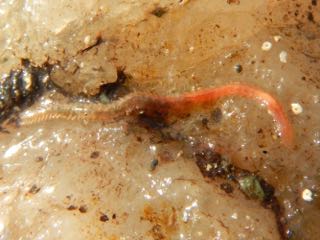
It would have been easier to identify this if I had photographed it in a bowl with some
seawater, so that the parapodia on the sides of the body could be extended further and not cling to the body.
| 
banded brittle star, Ophionereis annulata
| 
-
|
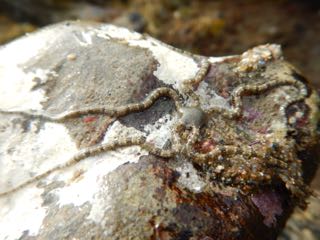
-
| 
-
| 
-
|
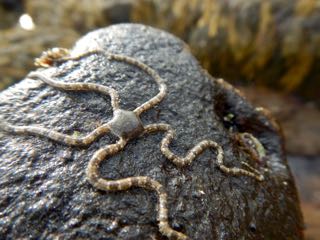
-
| 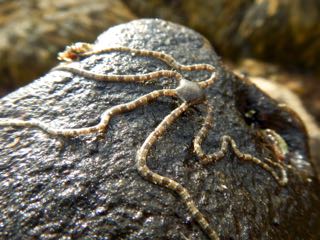
-
| 
-
|

Sargassum muticum, or wireweed, is a non-native alga that arrived in
California around 1970 from the northwestern Pacific.
| 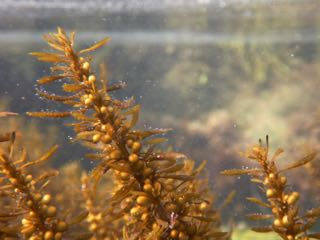
-
| 
-
|

According to polyclad flatworm expert, Tony Phillips, this one appears to have
a tubular pharynx with cerebral eyes in an inverted "v" and appears to have marginal tentacles. Because no marginal or frontal eyes are visible, this one is presumed
to be a juvenile Eurylepta aurantiaca, a polyclad that I have found in at least two other areas of southern California.
It was very active, and even had a swimming escape response that was impressive. Really, it was quite beautiful.
| 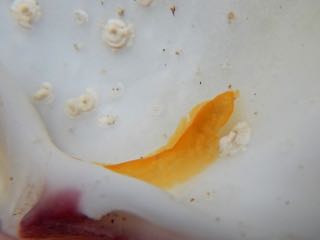
-
| 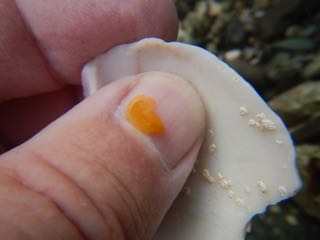
-
|
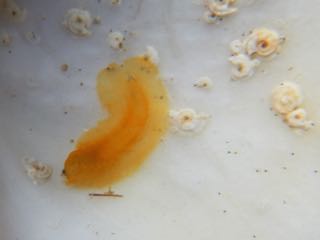
-
| 
-
| 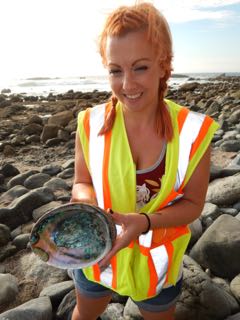
-
|
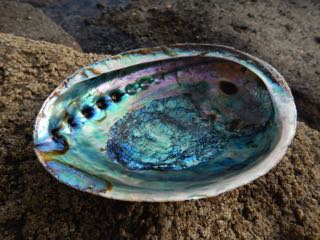
-
| 
This Haliotis fulgens, green abalone, shell was found on the beach.
| 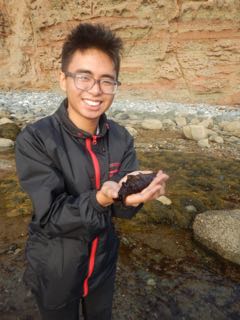
-
|

-
| 
The shell on the left is Pusula solandri (formerly Trivia solandri),
is another southern species that to me seems to have become more common in Orange County in recent years. I used to find the more northern P. californica more often.
Other snails here are chesnut cowry, California cone, and Poulson's rock snail.
| 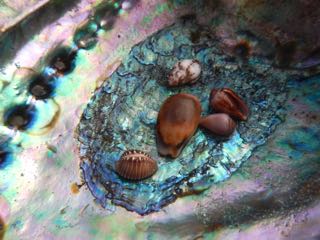
-
|

-
| 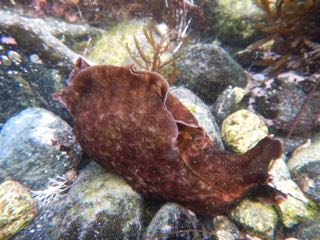
California sea hare, Aplysia californica
| 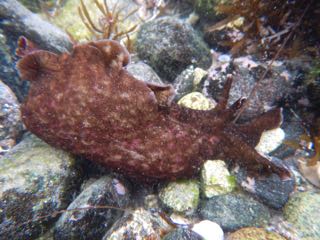
We saw the brownish California sea hares but no black sea hares. Compare this with the many we saw on the Saturday field trip. Perhaps they came in to breed by Saturday.
|
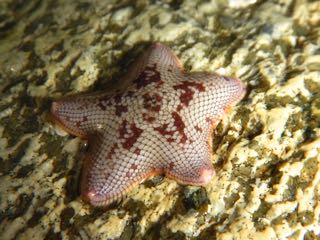
Juvenile bat star, Patiria miniata
| 
-
| 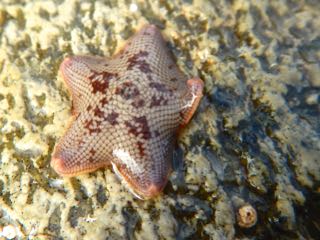
-
|
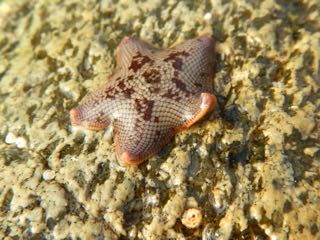
-
| 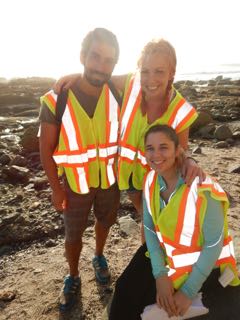
-
| 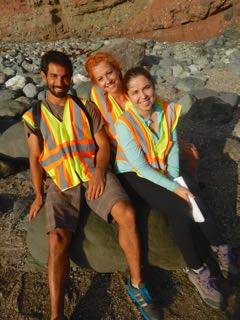
-
|
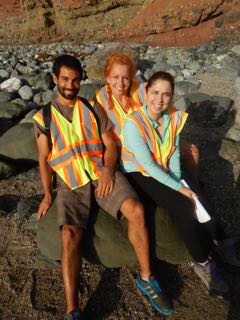
-
| 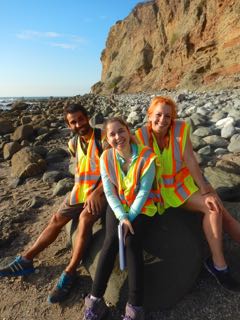
-
| 
-
|

One of the students found this jaw, which Dr. Hoese we think successfully identified as a California sheephead jaw.
| 
-
| 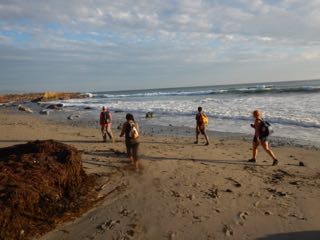
-
|
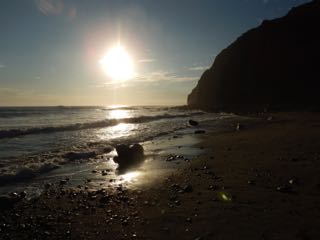
-
| 
-
| 
-
|
 Under Construction!
Under Construction! Under Construction!
Under Construction!